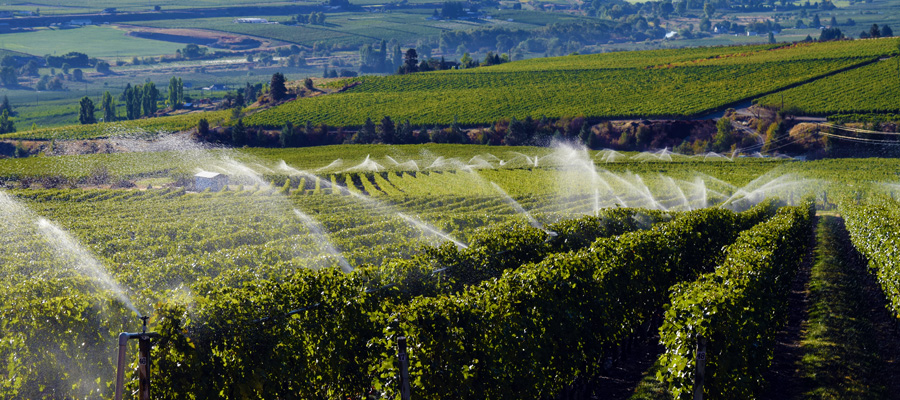LNG’s threat to water sustainability
By Ben Parfitt and David Hughes
One glaring problem with the provincial government’s strategy to turn British Columbia into a liquefied natural gas exporting juggernaut is that it scuttles any chance B.C. has to be a climate change leader.
But equally problematic is how our government’s economically dubious fixation with gas exports jeopardizes our irreplaceable water resources.
In Alberta as well as numerous U.S. states where natural gas companies operate, there is a growing public backlash against industry operations. Gas-drilling and hydraulic fracturing or “fracking” – a process where immense quantities of water, chemicals and sand are pressure-pumped down gas wells to break up rock and unleash trapped gas – has contaminated local water supplies.
Documented problems include poisoned water wells, “containment” ponds that leaked their deadly post-fracking contents into rivers killing fish, and municipal wastewater plants damaged by the industry’s corrosive wastewater.
With nearly 90 per cent of all new gas wells in B.C. fracked, how much of our water might be used and contaminated as natural gas drilling escalates?
Between them, multinationals Shell, Chevron, Exxon and British Gas and Malaysian state-owned Petronas each have plans for LNG plants in Kitimat or Prince Rupert and have been granted export approvals by the National Energy Board.
With combined investments of $70-billion, this group will need years to recoup investments and generate profits. So let’s assume they build the plants by 2020 and operate them through 2040. How many new gas wells would need to be drilled between now and then? And how much water would have to be sucked out of our rivers, lakes and streams or from wells and rendered toxic?
One underappreciated aspect of fracked gas wells is that gas production can be spectacular initially but declines rapidly. To maintain gas flows, then, it’s drill baby drill.
The largest five of seven LNG projects currently approved would export 14.2 billion cubic feet of gas per day (bcf/d) – not including gas used to power the liquefaction process itself. B.C. currently produces 3.5 bcf/d, all of which is committed to current customers. So B.C. would have to ramp up production roughly five-fold to meet these export requirements.
Let’s assume that only 70% of this capacity gets built. Based on known gas production rates and declines in fields like the Horn River and Montney, where most of this new gas would originate, roughly 39,000 new wells would be required by 2040. Assuming that nine of ten wells were fracked, a very conservatively estimated 582 billion litres of water would then be polluted and removed from the hydrological cycle.
But the likely number is far higher. Minor increases in the percentage of wells drilled in the Horn River – a major gas source for proposed LNG projects – would push water use sky high. In 2012 it took on average 77 million litres of water to frack just one gas well in the Horn, compared to 17 million litres of water elsewhere in B.C.
Currently, the industry pays nothing or virtually nothing for that water, while taxpayers foot all downstream environmental and human health costs.
With Premier Christy Clark vowing to make B.C. the “lowest cost jurisdiction” for LNG, don’t count on government heaping higher water management responsibilities on the industry – just the opposite.
In April, the government granted the energy industry regulator – the OGC – authority to issue long-term water licences to natural gas companies making the fossil fuel industry the only entity in B.C. with its own dedicated water regulator – a regulator established by the province to speed approvals of industry development applications. Meanwhile, natural gas industry operations in B.C. have already resulted in isolated incidents of contamination and misuse of water.
Recently, a leak of contaminated fracking water occurred at a massive double-lined pit maintained by Talisman Energy near Hudson’s Hope. Outside of Fort St. John, a pipeline ruptured in 2011 spilling toxic wastewater onto a field killing cows. Gas companies have also jeopardized water flows by overdrawing during low-water periods and been forced to halt water takings after drawing down lake levels too far.
In the midst of this, the government promises a new Water Sustainability Act.
Perhaps, then, it’s time government explained how it intends to square its LNG agenda with sustaining our most precious of natural resources. Where, exactly, will all the water come from to meet an unprecedented drilling program? How will environmentally safe water flows be maintained? Will water use fees be high enough to ensure that public servants can adequately monitor and enforce environmental regulations and protect the public interest – hopefully at arms length from the OGC?
It’s time for answers – before another 39,000 gas wells are drilled.
Ben Parfitt is resource policy analyst with the BC Office of the Canadian Centre for Policy Alternatives, a research associate with the University of Victoria’s POLIS Project on Ecological Governance, and author of Fracking Up Our Water, Hydro Power and Climate: B.C.’s Reckless Pursuit of Shale Gas.
David Hughes is a geoscientist who studied Canada’s energy resources for more than 30 years with the Geological Survey of Canada and author of BC LNG: A Reality Check.
Topics: Climate change & energy policy, Environment, resources & sustainability, Fracking & LNG

